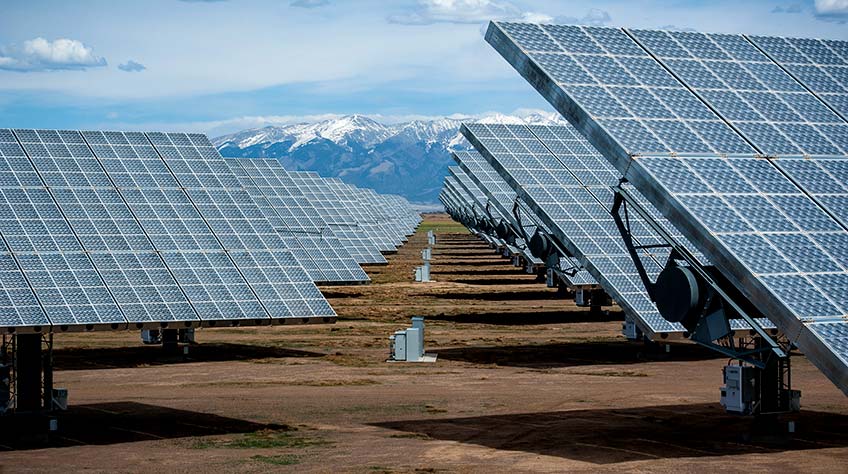Sunny with a Chance of Curtailment: NREL Simulates Possible Impacts of a Very-High-Solar Future
NREL Simulates Possible Impacts of a Very-High-Solar Future

Less than a decade ago, many wondered whether a high-solar-powered future was plausible. Fast-forward to today, with rapid declines in the cost of solar photovoltaics (PV) and energy storage, the question may no longer be if this future is possible, but when and how.
Analysts at the National Renewable Laboratory (NREL) teamed up to model the possible impacts of potential solar-dominant futures in Sunny with a Chance of Curtailment: Operating the US Grid with Very High Levels of Solar Photovoltaics, a new article published in the journal iScience.
Using an hourly model of the three main U.S. power grids in the year 2050 with 55% of the country’s annual electricity use generated by solar PV, researchers simulated how the system could run—including on the sunniest days of the year when more than 90% of the energy demand would be met by solar.
They found all energy demand and operating reserve requirements could be met with up to 55% annual PV, but this would require high levels of curtailment and energy storage. The research pinpoints four main considerations to keep the future power system running safely and smoothly with an abundance of solar.
Much Greater Ramp-Ups and Stop/Starts: Because the sun’s radiation is intermittent, solar power can’t be the only resource on the grid. In order to maintain power system reliability in this high solar future, other sources of electricity will still need to be used when solar isn’t available. This means ramping up generators and stopping and starting power plants more often and more rapidly, which could require new operating modes for many plants and a greater need for energy storage for flexibility.
Very High Instantaneous PV Penetration: Results show instantaneous PV penetrations above 90%, far beyond the levels historically seen in existing power systems. At times, solar, wind, and storage could support the entire demand, as well as the need for reserves. However, the system will need to be able to respond to large swings in the amount of conventional generation online, pointing to a potential need for changes in system operation to maintain stability.
Curtailment as the New Normal: When more solar energy is produced than is needed, the excess energy is curtailed (in other words, not used) to maintain supply/demand balance and power system frequency. While curtailment is often seen as a barrier for integrating solar into today’s power system, it would be the “new normal” in this future. Even with high levels of storage, model results showed significant curtailment during many spring days—and showed that curtailment could actually increase system flexibility.
Greater Frequency of Low and Zero Energy Prices: Results show that as more PV is added to the system, energy prices decline, energy price variability increases, and the frequency of hours with very low energy prices could increase up to 36%. How can electricity markets ensure revenue sufficiency with generation that is essentially free? This points to a need to consider the broader market assumptions and implications in possible futures with high PV penetrations.
The researchers emphasize that establishing the right utility system will be key. A high-solar-powered future will certainly look different from today’s power system—but with storage and curtailment playing an active role, results show that a system with 55% PV could plausibly support all U.S. energy needs. The researchers encourage continued study on a national scale, including identifying ways to use otherwise-curtailed energy using price-responsive demand, controlled electric vehicle charging, and new industrial processes.
Because these results only reflect select element of operational feasibility, the researchers emphasize that future work should study the impact and costs of additional physical constraints such as frequency stability and system protection.
Learn more about NREL’s energy analysis research.
Last Updated May 28, 2025
